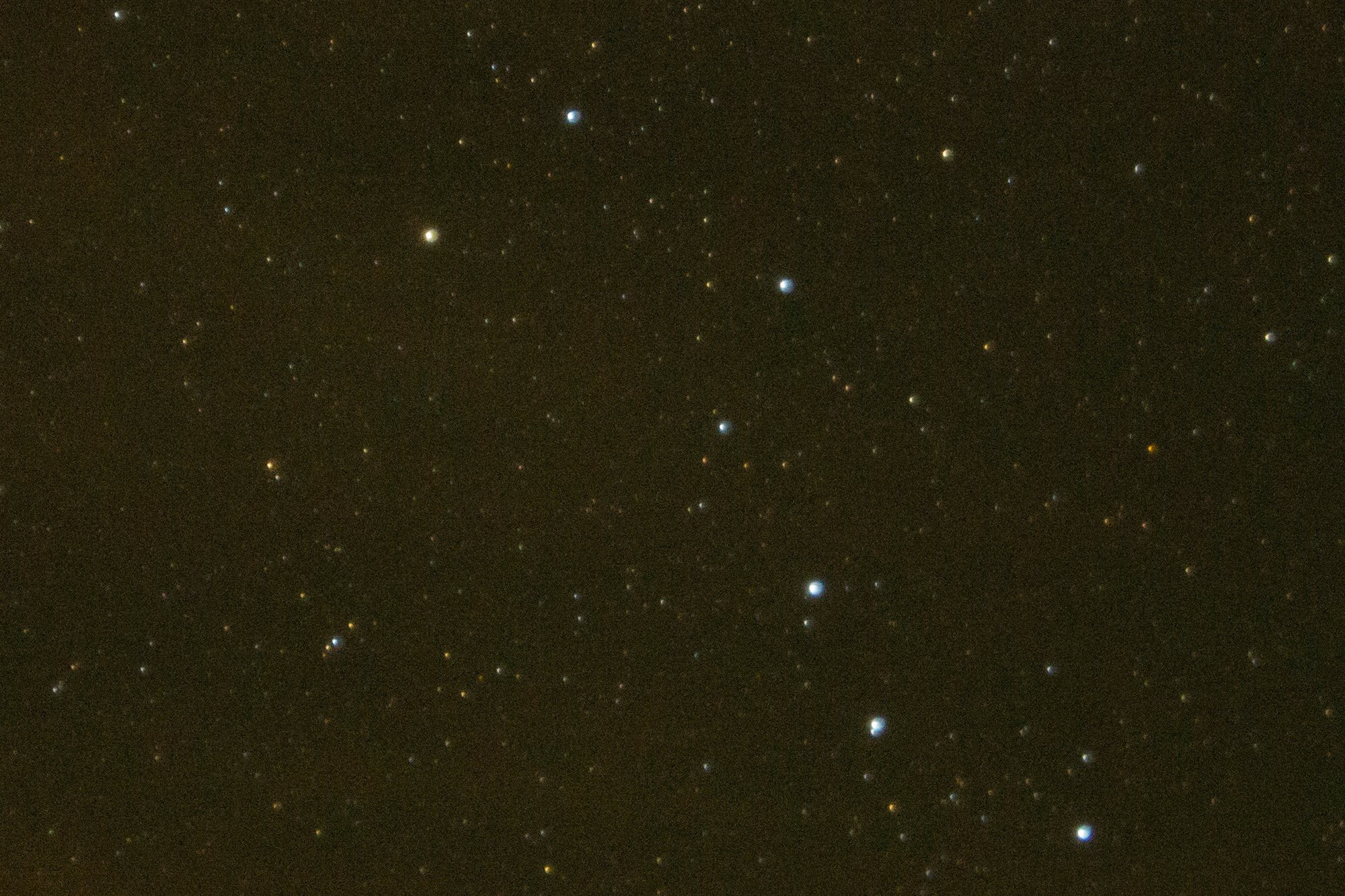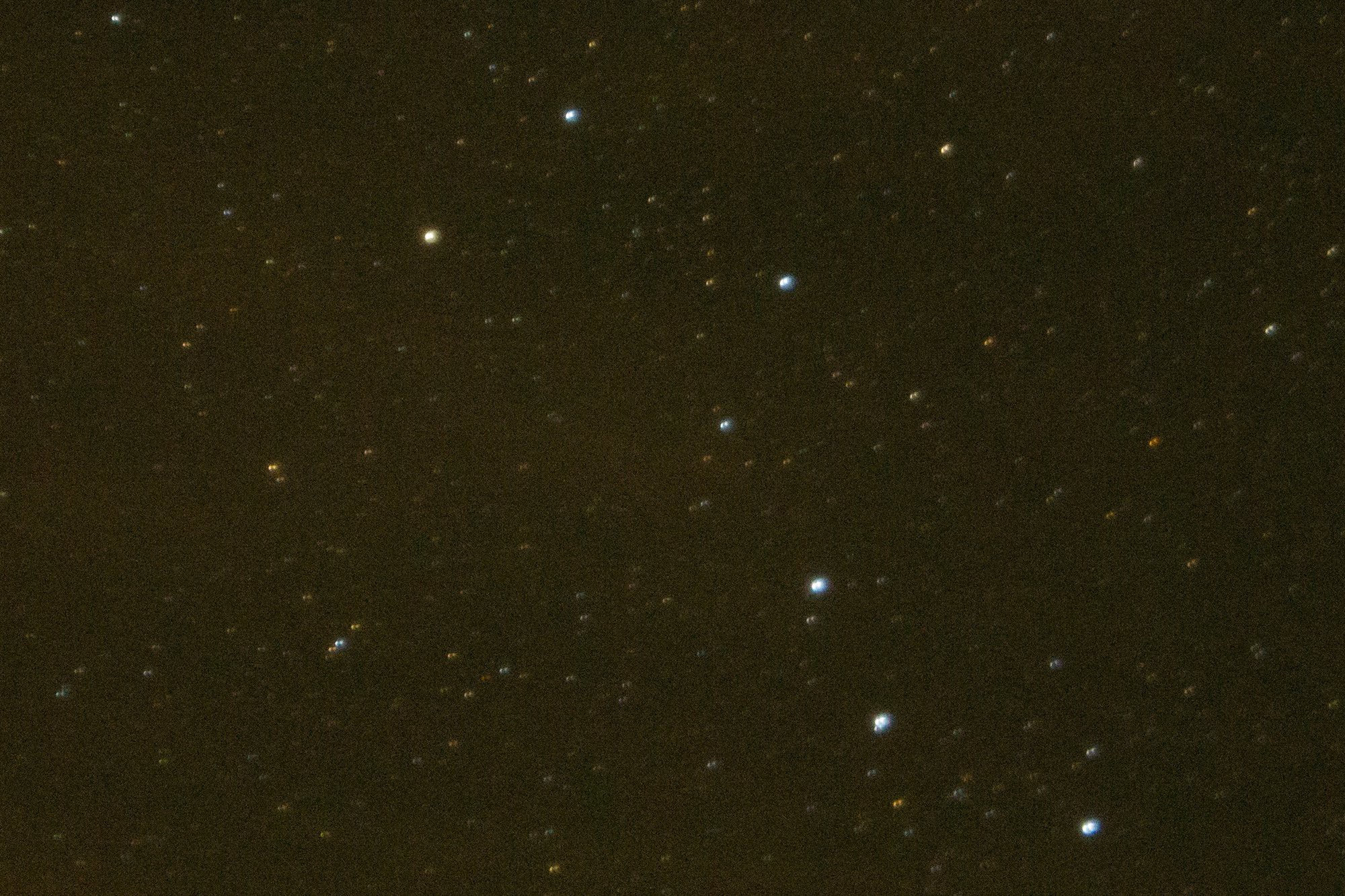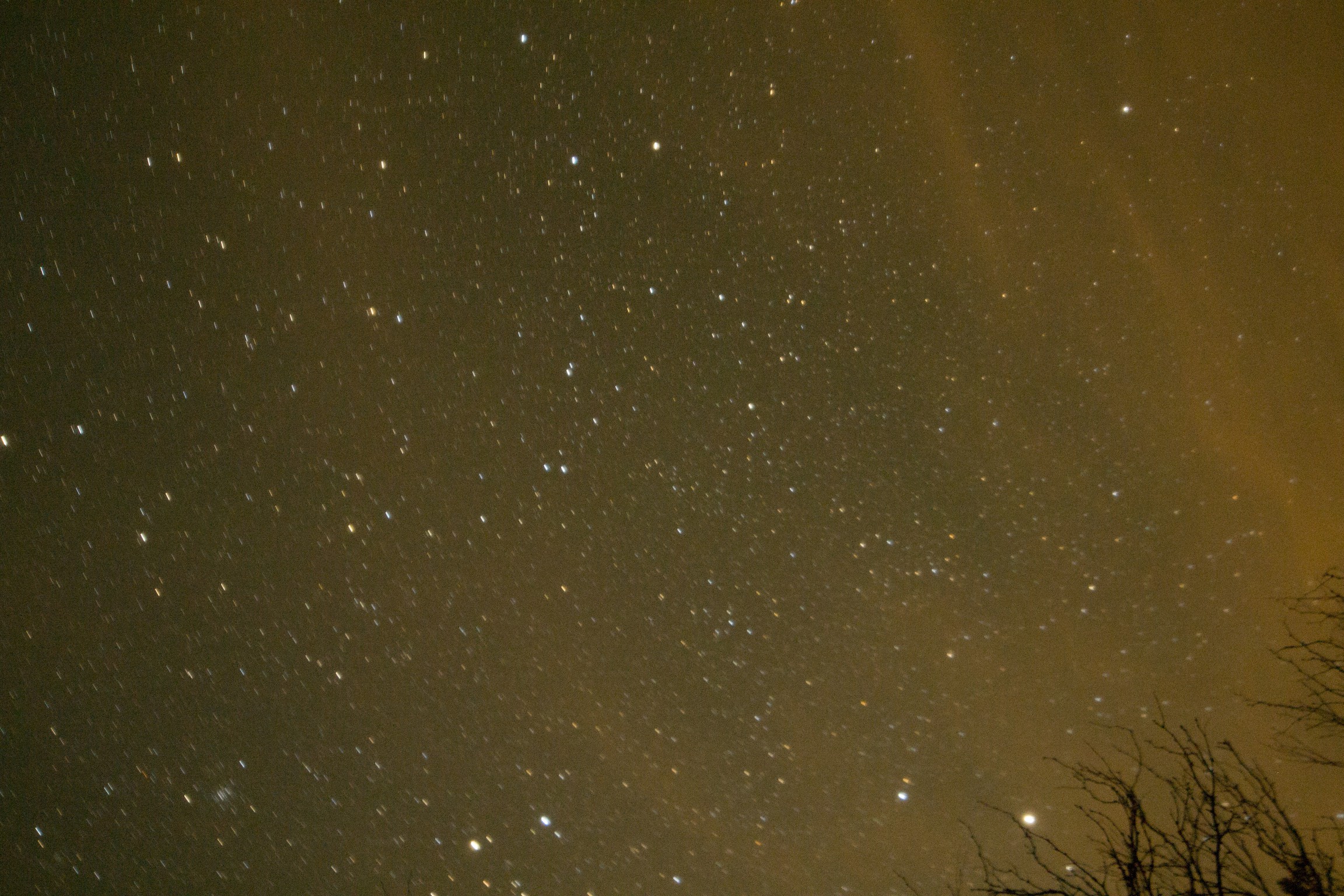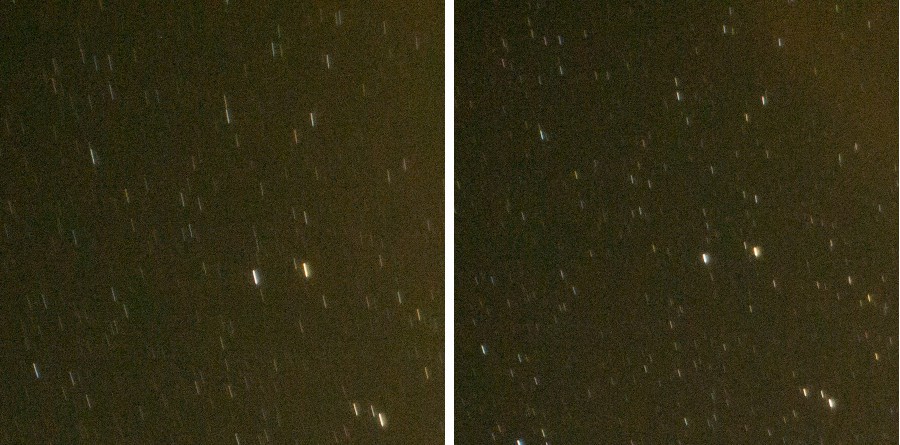In early April my wife and I took a several day camping trip to Caprocks Canyon in north Texas. The weather was gorgeous (especially compared to Kansas City at the same time), the moon was new, and the evenings were mostly clear. Perfect for astrophotography!
Below is an A/B comparison shot of a section of the northern sky centering on Ursa Minor. The camera was attached to the motor mount and the rig was set on the tripod then manually aligned with Polaris (leftmost star in Ursa Minor in this view). All pictures were taken with the same equipment: Nikon D3100 camera, Rokinon F/2.8 14mm lens. The sky was slightly cloudy and partially reflected the orange cast of nearby campfires. The images are cropped / resized in Lightroom and GIMP to show detail but not otherwise adjusted.
Ursa Minor - 25 second exposure, ISO 3200

No rotation

Rotation engaged
Manual alignment on Polaris aside, the "rotation engaged" image is more blurry than the image without rotation engaged. This level of blur wasn't visible to me on the camera's LCD.
Here's another A/B shot, this time of the western sky with the same tripod position / alignment and a longer exposure.
Western Sky - 60 second exposure, ISO 3200

No rotation

Rotation engaged
And now an exclusive picture of me as I proofed the images after we returned home:

Zooming in on the left side of the western sky photos shows that the star trails with the camera mount rotation engaged are definitely much longer. In fact the arcs are to the tune of two times longer.

Rotation engaged on the left, no rotation on the right.
The motor rotation was turning the wrong way for the northern hemisphere. I made the simple mistake of setting the A3967's DIR pin for "counterclockwise" by looking down at the motor mount from above instead of looking at the sky along the axis of rotation. The result was that the camera was actually turning with the rotation of the Earth and not opposite it, and so doubled the apparent motion of the stars instead of eliminating it.
Well, that's experimentation for you! Aside from the obvious firmware change to swap the directions I'm also taking the time to make some changes to the PCB design to add more control from the MCU to the motor driver and validate the camera shutter control circuit. We're planning a camping trip to the Colorado Rockies this summer which should provide another excellent opportunity for astrophotography and testing the mount. Stay tuned!
 Chris
Chris
Discussions
Become a Hackaday.io Member
Create an account to leave a comment. Already have an account? Log In.